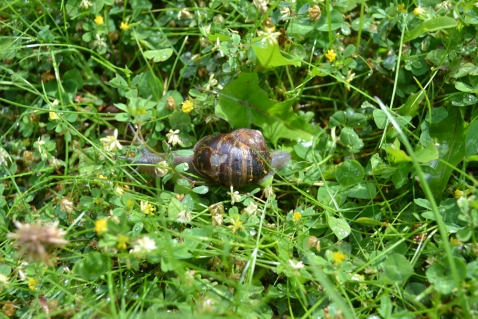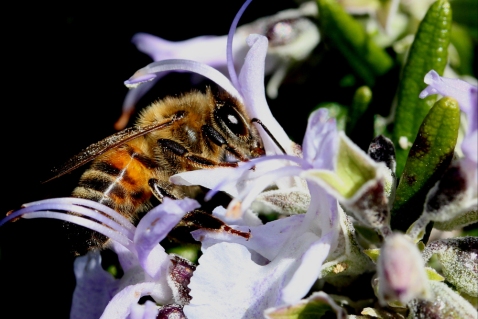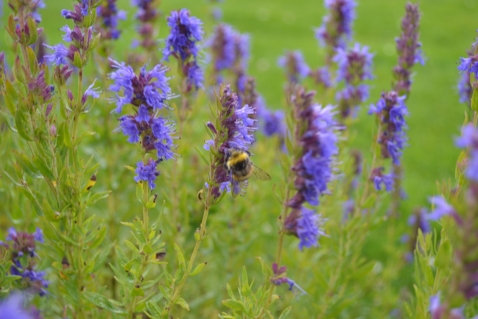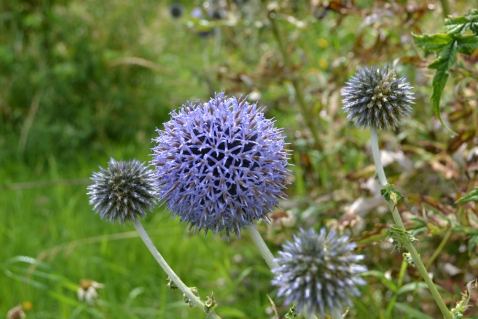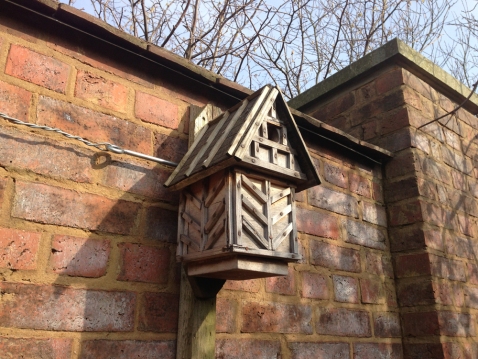How does an ecosystem work at Blakesley Hall?
When you think of Blakesley Hall, what first comes to mind? Is it the Tudors and old houses, or might it be our wonderful gardens? But in fact, did you know that Blakesley plays a significant role in urban ecology? You might not necessarily think of an ecosystem when a museum garden comes to mind, yet our gardens attract a plethora of biodiversity.
But what exactly is an ecosystem and where do they exist? The simple answer is, everywhere. Ecology is all around us, in our garden at home, a derelict building in the city centre and in the pond in our local park. Essentially an ecosystem is a collection of plants and animals, combined with non-living components like water, air and soil that share the same resources and environment and fundamentally rely on each other. A very cyclical process! There are three components that make up an ecosystem; producers, consumers and decomposers.
At Blakesley, the ‘producers’ are our plants and trees, because they make their own food from sunlight and are self-sufficient. We are often more concerned with making our gardens look attractive and fail to notice that while we enjoy the beauty of tulips and roses at Blakesley, these flowers are providing an important food source for an array of animals.
That brings me onto the next group, called ‘consumers’ because they do exactly what their name suggests and consume plants and living things. There are two types present in our garden. First, we have the primary consumers that live off plants. These include bees, butterflies, caterpillars and snails. You’ll always be certain to spot this group especially while wandering through the herb garden, particularly past the lavender.
Then there are the secondary consumers. These are the meat-eaters and at Blakesley these include birds like the sparrow hawk, blue tits and magpies, and small mammals such as hedgehogs, grey squirrels, and on occasion, the odd urban fox. Another familiar secondary consumer in our garden is the spider.
The third group, which possibly isn’t as interesting but equally as important as the previous two groups, are known as the ‘decomposers’. These are organisms like worms, fungi and bacteria that break down dead organic matter and return necessary nutrients to the soil. I like to think of this group as the ‘recyclers’, clearing up the waste. In other words, they are the workers that you don’t really see but who are always there working hard in the background. All three groups actively contribute to a sustainable and balanced ecosystem at Blakesley.
But how else do plants, grasses and trees contribute to our ecosystem? Well, our knot garden might look pretty but it actually provides not only vital plant nutrients, but necessary shelter for birds and tiny mammals over the long winter months. Butterflies and bees also fill our herb garden, attracted by the vibrant colours and aromatic fragrances, but they are actually working as tiny engineers, collecting pollen from flowers and transporting it through our ecosystem. And while bees are extremely proficient at pollination, butterflies are a very important entity in this process too. Although, not as adept as bees at pollination, butterflies act as an excellent guide to how healthy an ecosystem is. Butterflies are extremely sensitive to climate change and habitat loss, so their presence tells us if an ecosystem is working properly, and act as a reliable indicator to an environment’s well being. So if you have scores of butterflies in your garden, chances are you have a balanced ecosystem. And if you want to spot a butterfly at Blakesley, walk around the lavender and daisies in the herb garden, and you might just catch a glimpse.

The tulips in the Friends’ Garden may look attractive, but plants are also an important food source to many animals
Blakesley exists within an urban environment and ecology is not necessarily the first thing you consider when maintaining a garden. Gardens in general are engineered and manipulated by people to look attractive, and Blakesley is no exception. By this, I mean that we cut our grass, trim back the hedges and remove the weeds, therefore indirectly destroying habitats because we need our lawns to look appealing for visitors. But there is one area of our garden that isn’t engineered with an edged lawn and weed free, and that’s our wildflower meadow.
Wildflower meadows are threatened by extinction so the very fact that we have one is helping to maintain vital habitats. You may not know this, but wildflowers actually are a perfect haven for wildlife because they attract an assortment of species, which either feed on the flowers or the animals found in the meadow, and offer shelter as well. Certainly, wildflower meadows help to maintain a healthy ecosystem, and we’re looking forward to when our meadow springs back to life in a couple of months’ time.
Ecology is an important part of our gardens and we make every effort to encourage wildlife to ‘set up’ home here. Indeed even the bugs and birds have Tudor style homes that Richard Smalbroke would be proud of!
So next time you visit us and stroll around our gardens, have a think about the many processes that are taking place and what creature might be hiding away in a hidden habitat somewhere.
Look out for our Ecology Weekend in June.
Blog written by Anne-Marie Hayes.
Follow us on Twitter @Blakesley_Hall
Like Blakesley Hall Museum on Facebook



